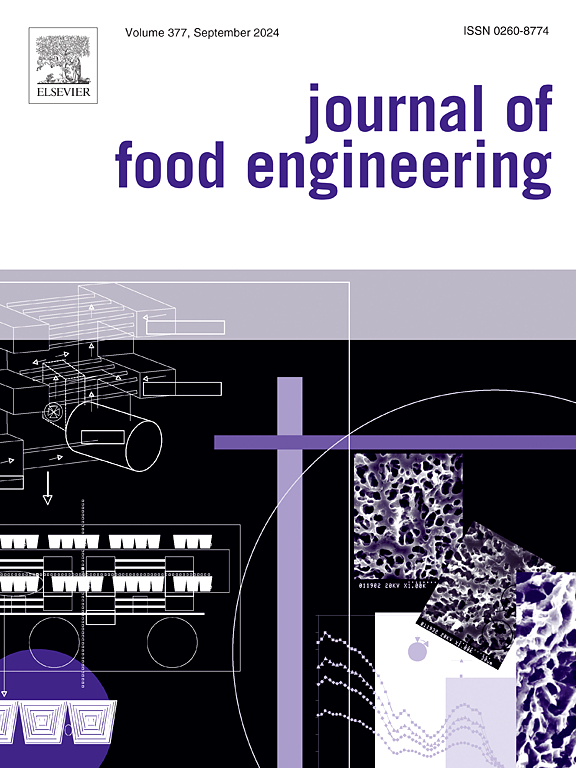Stabilization mechanism of oil and water emulsions by powdered buttermilk
IF 5.3
2区 农林科学
Q1 ENGINEERING, CHEMICAL
引用次数: 0
Abstract
This study investigates the use of buttermilk powder to stabilize oil-in-water emulsions, focusing on casein as the stabilizer, the formation of Pickering particles at the oil-water interface, and the impact of heating on the size of stabilizing proteins. Emulsions were prepared with buttermilk powder dispersions, both before and after heating, and with isolated micellar casein powder. Analyses included surface characteristics, particle size, zeta potential, three-phase contact angle, rheological behavior, and macro and microscopic evaluations. The results showed that casein significantly reduces interfacial tension, playing a crucial role in emulsion stability. No significant increase in particle size was observed after heating, and zeta potential values remained constant (−25.2 mV for buttermilk and −23.2 mV for heated buttermilk), suggesting that heating does not affect particle charge. Stability was confirmed by the creaming index (CI) after seven days, with emulsions containing 5% buttermilk showing a CI of 7.62%, while emulsions with 1.28% micellar casein showed a CI of 8.61%, with no significant differences. Rheological analysis revealed a pseudoplastic behavior and an increase in the elastic modulus (G′) with stabilizer concentration. Microscopic analysis highlighted the importance of stabilizer concentration and demonstrated that the Pickering stabilization process is essential for the metastability of emulsions.
酪乳粉对油水乳状液的稳定机制
本研究考察了酪乳粉对水包油乳状液的稳定作用,重点研究了酪蛋白作为稳定剂,油水界面皮克林颗粒的形成,以及加热对稳定蛋白大小的影响。乳剂分别用加热前和加热后的酪乳分散体和分离的胶束酪蛋白粉末制备。分析包括表面特性、粒度、zeta电位、三相接触角、流变行为以及宏观和微观评价。结果表明,酪蛋白显著降低了界面张力,对乳状液的稳定性起着至关重要的作用。加热后的颗粒尺寸没有明显增加,zeta电位值保持不变(酪乳为- 25.2 mV,加热后的酪乳为- 23.2 mV),表明加热不影响颗粒电荷。7天后的乳化指数(CI)证实了乳剂的稳定性,酪乳含量为5%的乳剂的CI为7.62%,胶束酪蛋白含量为1.28%的乳剂的CI为8.61%,两者差异不显著。流变学分析表明,随着稳定剂浓度的增加,材料的弹性模量(G′)增加,并表现出假塑性行为。显微分析强调了稳定剂浓度的重要性,并证明了皮克林稳定过程对乳状液的亚稳性至关重要。
本文章由计算机程序翻译,如有差异,请以英文原文为准。
求助全文
约1分钟内获得全文
求助全文
来源期刊

Journal of Food Engineering
工程技术-工程:化工
CiteScore
11.80
自引率
5.50%
发文量
275
审稿时长
24 days
期刊介绍:
The journal publishes original research and review papers on any subject at the interface between food and engineering, particularly those of relevance to industry, including:
Engineering properties of foods, food physics and physical chemistry; processing, measurement, control, packaging, storage and distribution; engineering aspects of the design and production of novel foods and of food service and catering; design and operation of food processes, plant and equipment; economics of food engineering, including the economics of alternative processes.
Accounts of food engineering achievements are of particular value.
 求助内容:
求助内容: 应助结果提醒方式:
应助结果提醒方式:


